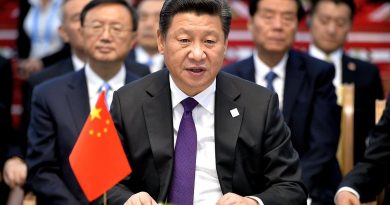Russia’s “Hybrid Warfare”: A Fallacy of Terms?
Alejandro Ramirez
Staff Writer
Since the fall of the Soviet Union, competing world orders and clashing national interests increasingly sparked fears of new conflicts erupting. The concept of ‘hybrid warfare’, or military actions existing in the liminal space between peace and war through various non-military strategies, has been consistently identified as a cause for tension since 2014. Operations within liminal space, in this case, refers to Russian acts of aggression that are below the United States’ threshold of kinetic response but include the potential of inflicting damage. The Russian invasion of eastern Ukraine in 2014 drew worldwide attention to Russia’s use of these deniable operations strategies. But as the discussion around this new technique of waging modern war intensifies, it is necessary for a more thorough understanding of how and when Russia engages in hybrid warfare. Avoiding the dangers of a future confrontation with Russia through a mischaracterization of Russian strategy should be of the highest priority to the United States and its Western allies.
There is an overarching theme of Russia’s “national psychology” in the current literature on Russia’s national interests abroad. The dominant mentality that fuels Russia’s behavior towards the West in the context of the current political tensions are understandable yet problematic grievances Russia holds against the U.S. Actions such as the perceived snubbing of Russia from joining NATO under President Yeltsin, the disastrous privatization schemes driven, in part, by U.S. bankers in the early 1990s, and the West’s intervention in Yugoslavia—particularly in Serbia and Kosovo—instituted deep-seated distrust among Russians toward American and Western behavior regarding foreign policy issues. Consequently, Russia’s disinformation campaigns and obfuscation behaviors are more understandable to Western analysts and observers.
European and Western media more commonly associate hybrid warfare strategy with the “Gerasimov Doctrine.” The so-called doctrine is named after Valery Gerasimov, the Chief of General Staff of the Russian Armed Forces, who outlined the concept of Russian hybrid warfare as a reflection of U.S. warfare strategy against Russia in a military magazine. But notwithstanding Gerasimov’s prominent position in the Russian military hierarchy, the evolution of hybrid warfare doctrine in Russia, in fact, stems from Igor Panarin and Alexsandr Dugin, two prominent academics tied to the Putin administration who are both ardent proponents of information operations as the most valuable counter to western interventionism in Russia’s sphere of influence.
So where do scholars find consensus as to the definitions of these terms, let alone their implementation? Hybrid warfare, grey-zone operations, and liminal warfare are common buzzwords in the current foreign policy sphere. Yet, conflicting opinions among strategists on using these terms to describe Russia’s behavior today obfuscate the usage of proper verbiage, something that deserves consensus. While debates over Russia’s underlying strategies and where to apply them help deepen our understanding of relations between Russia and the West, they can also lead to misunderstandings of state behavior that can have far-reaching consequences. Notably, foreign policy analysts have rebuked the idea of hybrid warfare as a new strategy that Russian strategists successfully implemented during the annexation of Crimea in 2014. None of the aforementioned terms appear in the U.S. National Security Strategy nor the National Defense Strategy, despite their widespread use in the U.S. military and intelligence community.
Likewise, the terms do not appear in any of Russia’s official military publications despite senior military leaders’ awareness of the concepts. In the Russian military’s understanding, hybrid warfare, as Western militaries know it, describes a blended, multi-faceted panel of threats in the battlespace, formed around the various conventional and unconventional strategies employed by enemies. Gerasimov’s “Gibridnaya Voyna” or hybrid warfare, on the other hand, is more concerned with the politicized aspects of warfighting, specifically the use of liminal political tactics to undermine a foreign adversary, including disinformation campaigns and related destabilization activities.
A major source of confusion among Western analysts is that the distinction between hybrid warfare and “Gibridnaya Voyna” is much more important in Russian military analysis than is let on. The development of these ideas since the mid-1990s has created a clear distinction between the means of hybrid war and the situations in which they are deployed. On the one hand, political, non-military tactics are used to weaken an adversary before beginning conventional operations, but they can also be independent when military action is untenable. Mark Galeotti, arguably the foremost commentator on hybrid warfare from a Russian perspective, poses the question aptly, “The whole debate about hybrid war is really two debates intertwined: about the strategic challenge from an embittered and embattled Russia, and the changing nature of war in the modern age.”
For Russian strategists, these concepts are better used through political and executive implementation and are not as applicable to the armed forces themselves. This is where the critical juncture emerges—hybrid warfare as military actions occurring during overt wartime operations versus information operations, which, while aggressive, find their use as an alternative to war. Information operations are a form of proactive deterrent and geopolitical tools that Russia can exploit to punch up against a superior military force. In short, the view amongst Russia’s most prominent military strategists relies on a response to U.S. aggression, not the other way around.
This interpretation skews from the mainstream understanding of Russia’s behavior in conflicts of the past decade, particularly in Crimea. But even Galeotti and others, in their attempt to restructure the debate around information operations rather than hybrid warfare tactics, have inadvertently reiterated the already-established Russian conception of geopolitical campaigns against the West and brought it “into the center of Western academic and political debate.”
The use of cyberweapons is a strong example of how the United States’ own tools of unconventional warfare can and have been used against it in the liminal space by foreign adversaries like Russia. Alluding to Operation Olympic Games, the joint U.S.-Israeli operation to sabotage the Iranian centrifuge program at Natanz in 2011, David Sanger reports that, “President Obama frequently mentioned to his staff that once [Olympic Games] got out, every country in the world would use it as an excuse to say, ‘Look, the Americans are doing it, so why not us?’” This frightening precedent set by the United States’ use of “grey-zone” kinetic and cyber operations and their short-term successes have only been repurposed as possible tools in a larger toolbox that Russia knows can assist them in combating any perceived threats of Western aggression.
Therefore, being clear on where war begins and where peace ends must be considered more actively in the discussion of Russian information operations. These tools are not new, nor are they a “hybrid” of any multiplicity of strategies: they are simply options that states, such as Russia and Western nations, may resort to when overt conflict is undesirable. Conflating these strategies with buzzwords that gloss over both their historical existence and diverse usage only serves to hinder the U.S. foreign policy community at large from developing the appropriate strategies to combat them politically and diplomatically.



